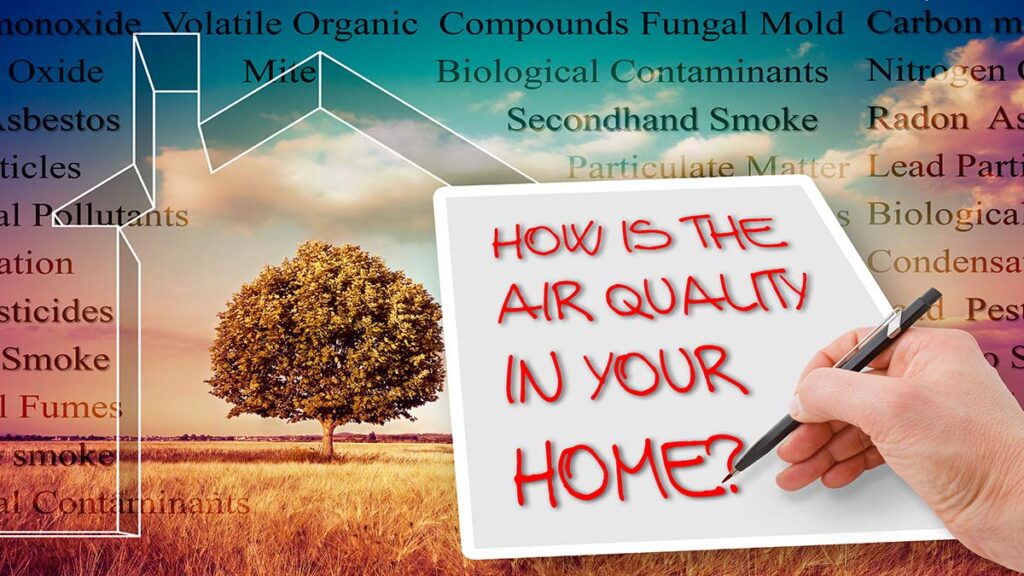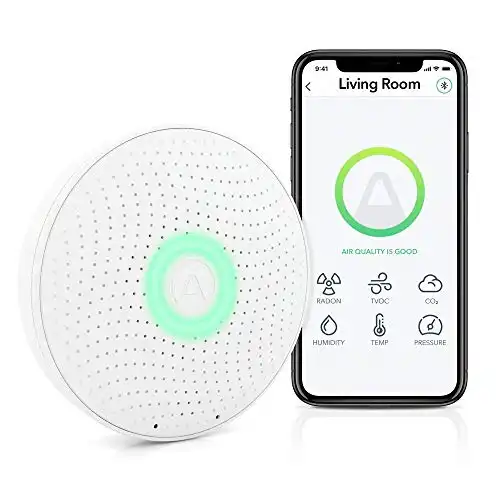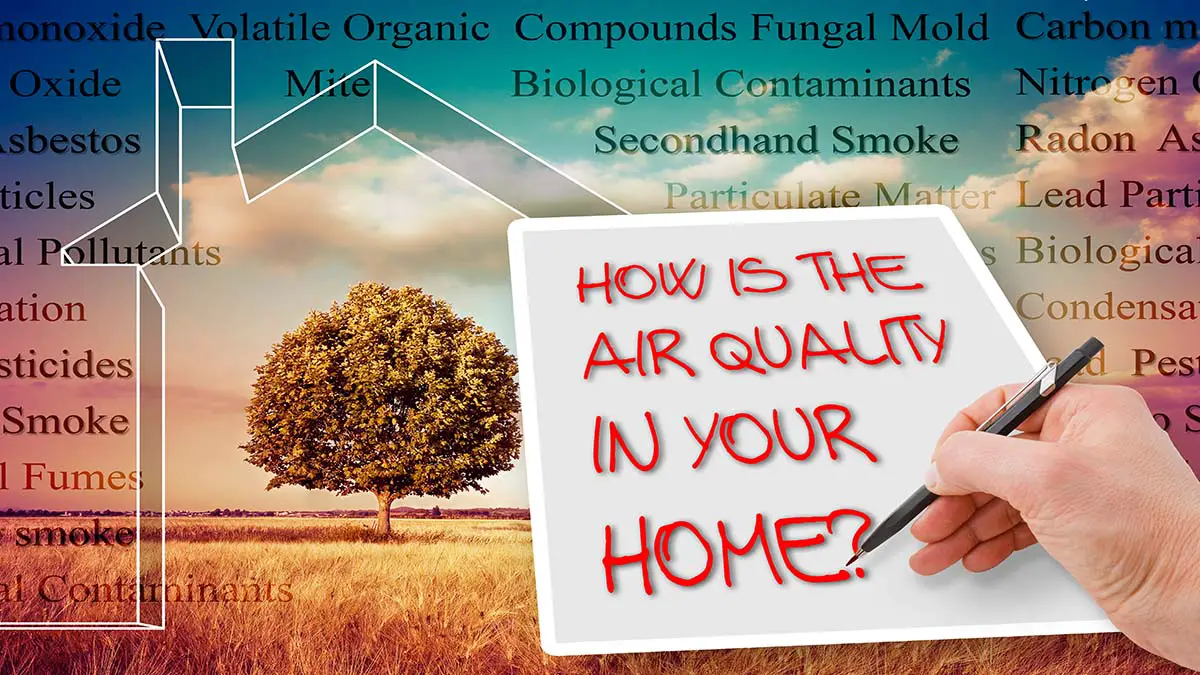Indoor air pollutants, such as particulate matter, volatile organic compounds, carbon monoxide, ozone, radon, heavy metals, and biological allergens, significantly impact human health.
The air inside buildings can be up to five times more polluted than outdoor air. This is due to various factors, including poor ventilation, building materials, and cleaning products. Indoor air pollution can negatively affect your health, including headaches, dizziness, and respiratory problems.
These pollutants primarily originate from human activities within buildings and from outdoor sources. Although present in low concentrations, long-term exposure to these pollutants can lead to serious health risks, including Sick Building Syndrome (SBS) and Building-Related Illness (BRI). 1

Strategies for reducing indoor air pollution have been implemented, and future advancements in sensor materials, air quality monitoring systems, and smart home technologies are anticipated to enhance indoor air quality control further.
One way to ensure that the air you breathe is clean is to test the indoor air quality. Professional indoor air quality tests can measure the levels of pollutants such as carbon monoxide, radon, and volatile organic compounds (VOCs).
Regulatory agencies such as the Environmental Protection Agency (EPA) set indoor air quality standards. These standards outline the acceptable levels of pollutants in indoor air. Monitoring indoor air quality regularly is important to ensure it meets these standards. Doing so can provide you and your family or coworkers with clean air.
Understanding Indoor Air Quality
Indoor air quality (IAQ) refers to air quality inside buildings and other enclosed spaces. Poor IAQ can have negative effects on your health and well-being.
Indoor air pollutants can come from various sources, including building materials, household products, and outdoor pollution that enters through open windows and doors.
Common indoor air pollutants include carbon monoxide, volatile organic compounds (VOCs), and particulate matter. Exposure to these pollutants can cause various health problems, from headaches and fatigue to respiratory issues and heart disease.
To measure and monitor IAQ, you can conduct an air quality test. This can be done using various methods, including handheld devices, air quality monitors, and professional testing services. These tests can measure levels of common pollutants and help identify sources of contamination.
Regularly monitoring indoor air quality can help ensure a safe and healthy environment for you and your family. By identifying and addressing sources of indoor air pollution, you can improve the air quality and reduce your risk of health problems.

Sources of Indoor Air Pollution
Indoor air pollution can come from a variety of sources. Some of the most common sources of indoor air pollution include:
- Radon: a naturally occurring radioactive gas that can seep into homes through cracks in the foundation or walls.
- Lead: found in old paint, dust, and soil. Exposure to lead can cause developmental delays, learning difficulties, and other health problems.
- Ventilation: poor ventilation can cause indoor air pollution by trapping pollutants inside the home.
- Pollutants: such as carbon monoxide, nitrogen dioxide, and sulfur dioxide, which can come from fuel-burning appliances like stoves, furnaces, and water heaters.
- Mold: can grow in damp areas of the home and release spores into the air, causing respiratory problems.
- Volatile organic compounds (VOCs): are found in many household products like paints, adhesives, and cleaning supplies. VOCs can cause eye, nose, and throat irritation, headaches, and other health problems.
- Smoking: tobacco smoke contains over 70 carcinogens and can cause lung cancer, heart disease, and other health problems.
- Secondhand smoke: can cause many of the same health problems as smoking, including lung cancer and heart disease.
- Pet dander: can cause allergic reactions in some people.
- Ozone: a gas that can irritate the lungs and cause respiratory problems.
- Furnishings: many furniture, flooring, and carpeting types can release chemicals into the air.
- Fuel-burning appliances: like stoves, furnaces, and water heaters, can release pollutants into the air.
- Household cleaners: many cleaning products can release VOCs and other chemicals into the air.
Testing and monitoring it regularly is important to ensure your indoor air quality is up to par. You can do this by using an air quality test kit or hiring a professional to conduct an indoor air quality test.
You can also take many steps to improve indoor air quality, such as improving ventilation, using natural cleaning products, and avoiding smoking indoors.
Indoor air quality is regulated by various organizations, including the Environmental Protection Agency (EPA) and the Occupational Safety and Health Administration (OSHA). These organizations set indoor air quality standards to protect public health and ensure minimal indoor air pollution. 2
Health Effects of Indoor Air Pollution
Indoor air pollution can have significant impacts on your health. Exposure to air pollutants can cause various health problems, including respiratory issues, heart disease, and even cancer.
One of indoor air pollution’s most significant health effects is the increased risk of lung cancer.
According to the Environmental Protection Agency (EPA), exposure to radon, a colorless and odorless gas that can seep into homes, is the second leading cause of lung cancer in the United States.
Other pollutants, such as tobacco smoke and air pollution from outside, can also increase your risk of developing lung cancer.
In addition to lung cancer, indoor air pollution can also exacerbate asthma symptoms and cause headaches, fatigue, and shortness of breath. These health effects can be especially problematic for children, the elderly, and those with pre-existing respiratory or cardiovascular conditions.
Monitoring and testing indoor air quality regularly is important to protect your health. You can hire a professional to conduct an air quality test or purchase a do-it-yourself kit to measure the levels of pollutants in your home.
The EPA recommends maintaining good ventilation and reducing the use of products that can release pollutants into the air, such as certain cleaning agents and pesticides.
There are also indoor air quality standards and regulations to ensure that public spaces, such as schools and workplaces, are safe and healthy for occupants.
Testing and Measuring Indoor Air Quality
Maintaining good indoor air quality is essential for a healthy living environment. Testing and measuring indoor air quality is vital to identify pollutants and take appropriate measures to improve air quality.
One of the most effective ways to test indoor air quality is to conduct an air quality test. This test measures the concentration of pollutants in the air and helps identify the sources of these pollutants.
Measuring indoor air quality involves taking measurements of various parameters such as temperature, humidity, and levels of pollutants. There are multiple devices available in the market that can measure these parameters.
For example, a hygrometer measures humidity, a thermometer measures temperature, and a carbon monoxide detector measures the carbon monoxide concentration in the air.
To monitor indoor air quality, you can use a device called an indoor air quality monitor. This device continuously measures various parameters such as temperature, humidity, and levels of pollutants.
You can use the data collected by the monitor to identify the sources of pollutants and take appropriate measures to improve air quality.
Regulations and Standards for Indoor Air Quality
Regarding indoor air quality, regulations, and standards are in place to ensure that the air you breathe is safe and healthy. The Environmental Protection Agency (EPA) is the federal agency responsible for regulating indoor air quality in the United States. The EPA sets standards for indoor air quality and guides how to maintain healthy indoor air quality.
Several laws and regulations govern indoor air quality, including the Clean Air Act and the Safe Drinking Water Act. These laws require monitoring and maintaining indoor air quality to meet certain standards.
Testing and monitoring indoor air quality is critical to comply with these regulations. Several methods for measuring indoor air quality include air quality tests and monitoring devices. These tests can measure carbon monoxide, volatile organic compounds (VOCs), and particulate matter. 3
Indoor air quality standards vary depending on the type of building and its intended use. For example, schools and hospitals have stricter indoor air quality standards than residential buildings.
Improving Indoor Air Quality
Improving indoor air quality is essential for maintaining good health and well-being. There are several ways to improve indoor air quality, including:
1. Proper Ventilation
Proper ventilation is crucial for maintaining good indoor air quality. You can improve ventilation by opening windows and doors, using exhaust fans, or installing a mechanical ventilation system. A well-ventilated room circulates fresh air and helps remove pollutants and odors.
2. Controlling Humidity
Controlling humidity levels is essential for reducing the growth of mold and mildew, which can cause respiratory problems. You can control humidity levels by using a dehumidifier or air conditioner in humid areas of your home.
3. Removing Particles and Dust
Particles and dust can cause respiratory problems and aggravate allergies. You can remove particles and dust using a vacuum cleaner with a HEPA filter, which captures small particles and dust.
4. Maintaining Temperature
Maintaining a comfortable temperature is essential for good indoor air quality. High temperatures can increase the concentration of pollutants, while low temperatures can increase humidity levels. You can maintain a comfortable temperature by using a programmable thermostat.
5. Using Air Purifiers and Filters
Air purifiers and filters can help remove pollutants and allergens from the air. Several air purifiers and filters are available, including HEPA, activated carbon, and UV-C light filters.
6. Bringing in Fresh Air
Bringing in fresh air is essential for maintaining good indoor air quality. You can bring in fresh air by opening windows and doors, using an exhaust fan, or installing a mechanical ventilation system.
Regularly testing and monitoring indoor air quality can help ensure your home or workplace is safe and healthy.
Role of Building Materials and Furnishings
Indoor air quality can be affected by various factors, including building materials and furnishings. Some materials and furnishings can release harmful pollutants into the air, harming your health. It is essential to understand building materials and furnishings’ role in indoor air pollution and how to mitigate their effects.
Building Materials
Building materials such as wood, paints, and adhesives can release volatile organic compounds (VOCs) into the air. These compounds can cause eye, nose, and throat irritation, headaches, dizziness, and other health effects.
To reduce the impact of VOCs on indoor air quality, choose low-VOC or no-VOC paints and adhesives and use natural materials such as wood or stone instead of synthetic materials.
Furnishings
Furnishings such as carpets, upholstery, and curtains can also release VOCs into the air. In addition, some furnishings may contain harmful chemicals such as flame retardants or formaldehyde.
To reduce the impact of furnishings on indoor air quality, choose natural materials such as wool or cotton and avoid furnishings that contain harmful chemicals.
Cleaning carpeting and upholstery removes allergens like dust mites and pet dander that accumulate over time.
Asbestos
Asbestos is a building material commonly used but has since been found to harm human health. Asbestos can be found in insulation, flooring, and other building materials before 1990. If you suspect that your home may contain asbestos, it is important to have it removed by a professional.

Advanced Technologies for Monitoring Indoor Air Quality
When it comes to monitoring indoor air quality, various advanced technologies can help you keep track of the air quality in your home or office. These technologies can provide real-time data on pollutants and other contaminants in the air, allowing you to take action to improve the air quality if necessary.
EPA estimates that radon causes about 14,000 deaths per year in the United States–however, this number could range from 7,000 to 30,000 deaths per year. If you smoke and your home has high radon levels, your risk of lung cancer is exceptionally high. 4
The US Consumer Products Safety Commission recommends measuring your home’s radon level. Without measurements, there is no way to tell whether radon is present because it is a colorless, odorless, radioactive gas.
The air quality test is one of the most popular technologies for monitoring indoor air quality. These tests can measure a variety of pollutants and contaminants in the air, including VOCs, particulate matter, and carbon monoxide. The Airthings Smart Wave Plus is a great way to monitor your home’s radon and indoor air quality continually.
Another popular technology for monitoring indoor air quality is the air purifier. Air purifiers can help remove pollutants and contaminants from the air, improving the overall air quality in your home or office.
Note: Radon is a chemically inert gas and cannot be mitigated by air purifiers. Specific mitigation techniques are required to reduce radon levels, such as improving ventilation, sealing cracks in floors and walls, and using radon-specific ventilation systems.
Many manufacturers now offer indoor air quality monitoring systems that can provide real-time data on the air quality in your home or office. These systems can be integrated with other smart home technologies, allowing you to control your air quality monitoring system from your smartphone or other device.
In addition to these technologies, various indoor air quality standards and regulations are designed to protect the health and safety of people who live and work in buildings.
Government agencies or other regulatory bodies typically establish these standards and regulations, which can vary depending on the specific location and type of building.
Monitoring indoor air quality is important in ensuring you and your family breathe clean, healthy air. By using advanced technologies and following established standards and regulations, you can help ensure your indoor air quality is as high as possible.
FAQs
What are 5 causes of indoor air pollution?
Indoor air pollution can be caused by various factors, including tobacco smoke, mold and mildew, household cleaning products, volatile organic compounds (VOCs) from paints and solvents, and emissions from heating appliances like wood stoves or gas heaters.
What is indoor air pollution from?
Indoor air pollution originates from cooking and heating appliances, building materials, tobacco smoke, household cleaning products, and outdoor air pollutants that enter indoor spaces.
How toxic is indoor air quality?
The toxicity of indoor air quality varies depending on the concentration and type of pollutants present. In poorly ventilated spaces with high levels of pollutants like VOCs, mold, or carbon monoxide, indoor air can be significantly more toxic than outdoor air, posing severe health risks.
How do you know if indoor air is polluted?
Signs of indoor air pollution include persistent odors, visible mold, increased allergy or asthma symptoms among occupants, and physical symptoms like headaches or fatigue—some airborne pollutants, like radon, are odorless. Air quality tests can also be used to measure pollutant levels.
- Tran VV, Park D, Lee YC. Indoor air pollution, related human diseases, and recent trends in the control and improvement of indoor air quality. International journal of environmental research and public health. 2020 Apr;17(8):2927.
- Environmental Protection Agency: Introduction to Indoor Air Quality.
- Environmental Protection Agency: Volatile Organic Compounds’ Impact on Indoor Air Quality.
- United States Consumer Products Safety Commission: The Inside Story: A Guide to Indoor Air Quality.








